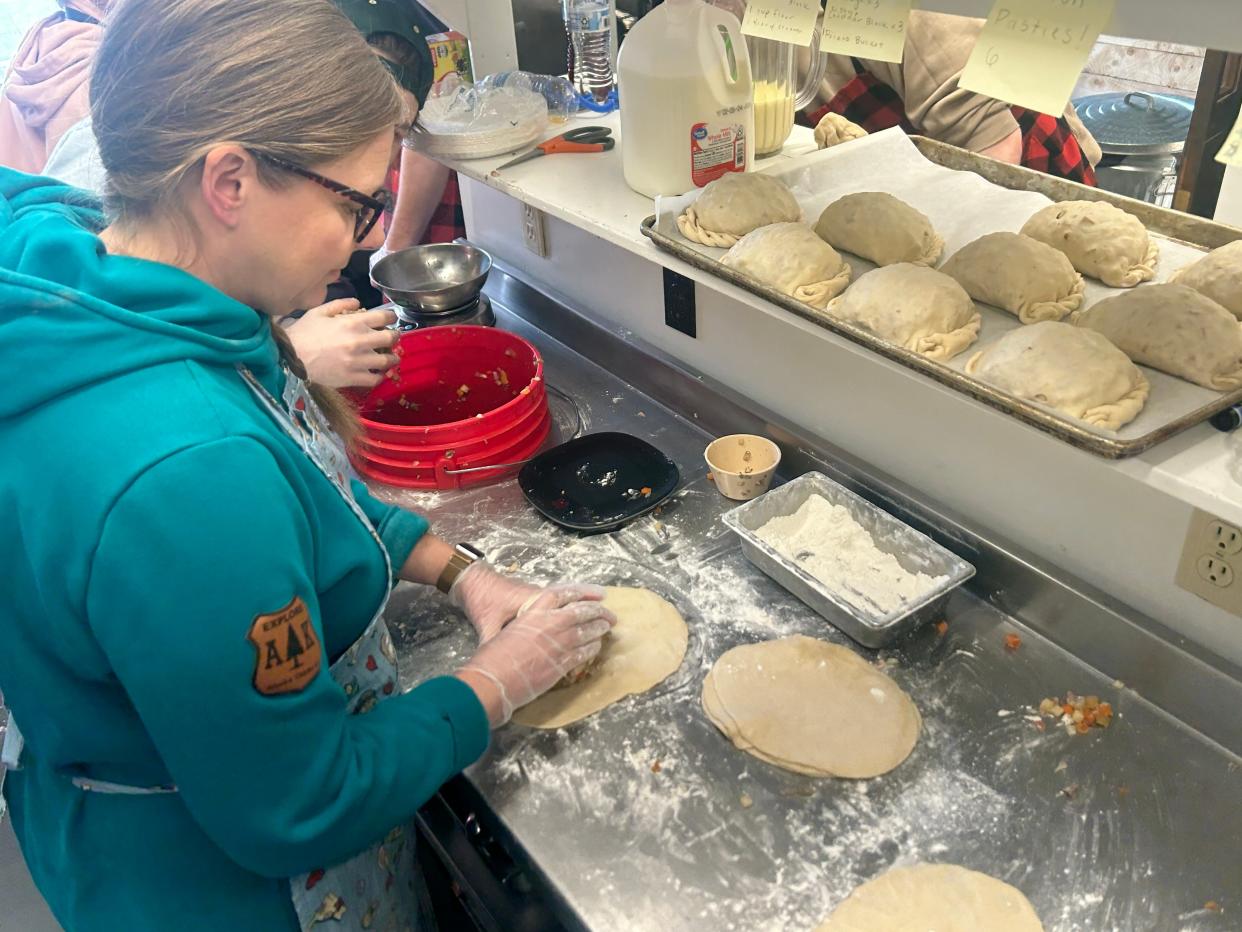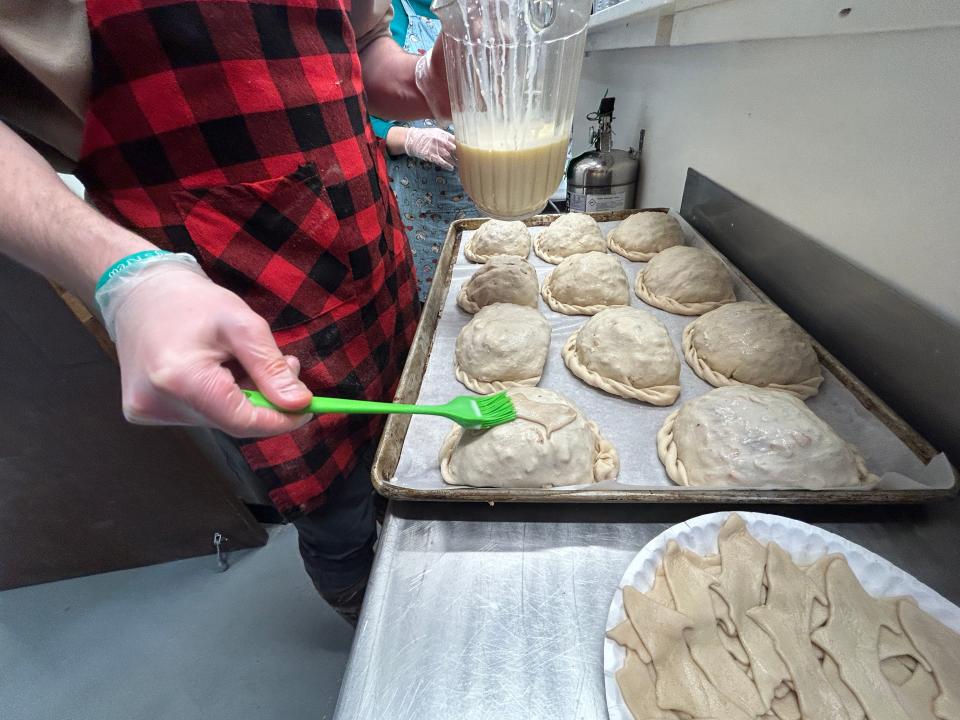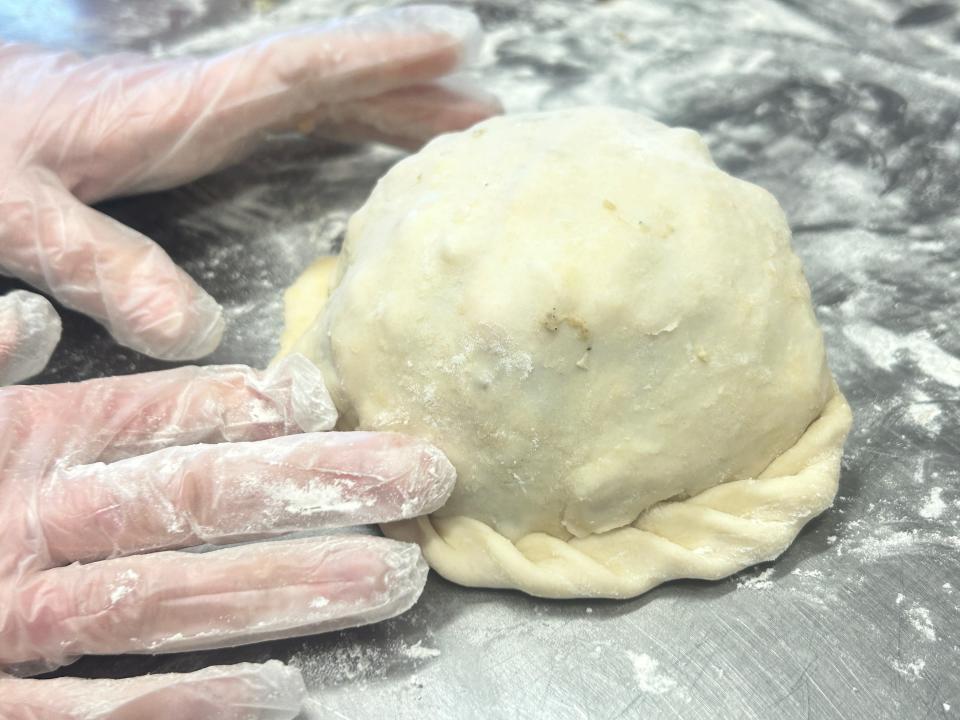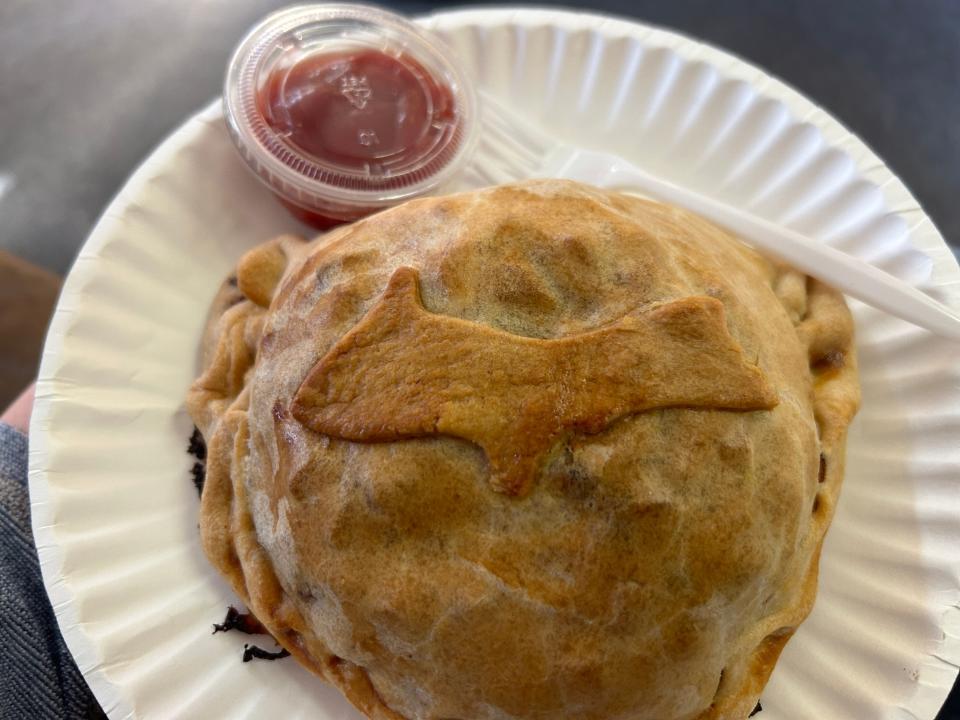UP delicacy: Learn how to make pasties of your own with Yooper Pasty Co.

SAULT STE. MARIE — Pasties are a well-known Upper Peninsula dish, and although they are not very common in Sault Ste. Marie right now, some residents may be surprised how easy it is to make pasties at home.
Pasties became a favorite staple in the UP region after immigrants, particularly those from the mining region of Cornwall, England, began settling in the area. As mining towns sprung up all across the UP, workers started bringing a pastry filled with meats and vegetables with them to work. The hearty meal was self-contained and did not make a mess.
The rest is history, and pasties became one of the UP's most recognized food dishes.
Despite its popularity, there are very few places to find pasties in the Soo today.
While they are sold in frozen food sections in some local grocery stores, the only place in town that consistently sells hot pasties is Yooper Pasty Co.
Owned by Heidi and Jeffery Ritter, Yooper Pasty Co. started as a small food truck two years ago. It eventually grew in size and eventually settled in a permanent location at 951 E. Portage Ave.
Heidi is a Marquette native who grew up eating and making pasties, and having lots of nearby local places to buy them as well. When her husband's job in the Coast Guard took them to different cities across the country, she continued the tradition of making pasties for her new neighbors and friends.
When the family moved to Sault Ste. Marie in 2022, Ritter was surprised and concerned to find no local pasty shops, so she decided to use her experience to build one of her own.
"When you're born up here, pasties are just part of tradition," said Heidi. "I was floored that the second biggest city in the UP didn't have a pasty shop."
More: Yooper Pasty Co. food truck opening in the Soo, featuring pasties in a variety of flavors

With the help of Yooper Pasty Co., the Soo Evening News has put together this step-by-step recipe so that anyone can try to make delicious pasties for themselves:
Make dough. Pasty dough is made without yeast so it does not rise. Dough can be made at home with the right mixing equipment with flour, vegetable shortening and water. After it is crafted, the dough is measured and cut and set aside until the pasty filling is ready.
Vegetable preparation. The most labor intensive part of the process involves measuring and cutting vegetables. A classic pasty includes potatoes, onion, carrot and rutabaga. Vegetables are diced and combined together. While no two pasty recipes are exactly the same, some people include rutabaga and some do not.
Mix it all together. Now that all the vegetables are prepped and ready to go, it's time to mix them all in together with the meat. Traditionally, beef is used in the mix, though some people use pork or other meats.
Flatten dough. At this point, the dough which has been sitting can be rolled out into flat sheets with a rolling pin or a machine. An average sized pasty would be slightly bigger than a person's hand and oval shaped when totally flattened.
Fold it together. Now, the pasty comes together. About a cup of the mixed filling is added into the center of the dough, which is folded into itself. The pasty is then shaped and sealed with a folding method called a crimp. Crimping the dough involves folding the outside under itself, but for amateur bakers, the edges of the pasty can be sealed by pressing down on the edges with the end of a fork.
Egg wash. The filled dough ball is now prepped for the oven with an egg wash. Similar to using olive oil on other breaded foods, an egg wash, made of egg and milk combined, is spread over the top of the pasty with a brush to allow it to cook more evenly without burning.
Bake. At the end of the process all that is left is to cook the pasty. Cooking times and temperatures can change depending on the size of the pasty, but an average-sized pasty should be cooked at around 350 degrees for about an hour.
Serve. After pulling it out of the oven, let it cool and serve with beef gravy or ketchup.

Subscribe: Get unlimited access to our content
To become great at making pasties takes years and lots of practice, but an average person should be able to cook one at home. Heidi Ritter warns that mistakes are common, and that one of the most common mistakes that people make is making too small of a batch.
The process of making pasties can take two days or longer when you include steps like peeling potatoes and dicing the hard-to-cut rutabaga, so Heidi says it saves time to make entire batches at once.

"If you're going to slave away at making pasties all day, you'll want to make bigger batches," she said. "It's really important that you make enough to reward yourself for the hard work of your labor."
The recipe also changes slightly based on variations. Some pasties are made without rutabaga, with pork instead of beef, or are completely new variations, such as breakfast pasties which can include egg and other breakfast items.

— Contact Brendan Wiesner: BWiesner@Sooeveningnews.com
This article originally appeared on The Sault News: UP delicacy: Learn how to make pasties of your own with Yooper Pasty Co.

